Arch Audio Records: The Premier Recording Studio & Production House in the Southeast
It’s no accident that when Sony Global was looking for a professional recording studio to record one of their artist, Arch Audio Records (“Arch Audio”) was their top choice. Arch Audio is not just known for the quality of their gear. They are also known for being able to produce and record commercially viable projects of all genres in a relaxing and creative environment.
From helping aspiring artists to create the perfect demo, to working on full projects with more established music industry icons such as Rock N’ Roll Hall of Fame Member Willie Kitchens, Arch Audio is no longer the best kept secret in a city that has been aptly nicknamed “Scenic City.”
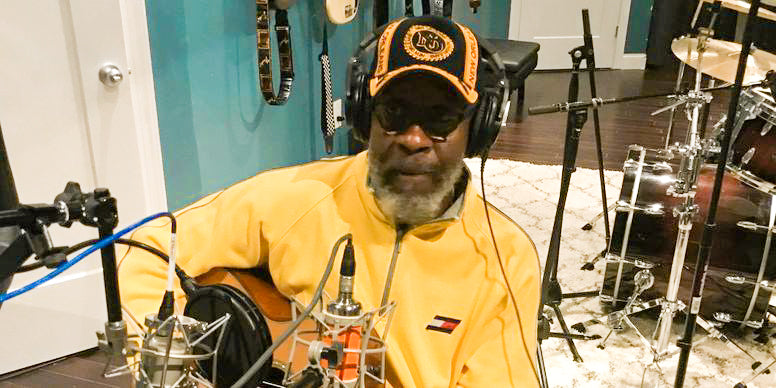
Based in Chattanooga, Tennessee, Arch Audio has established itself as one of the premiere recording studios in the Southeast. While cities like Chattanooga rarely have a professional recording facility of this caliber, the vision for Arch Audio was to provide artists with an opportunity to produce and record their records in a world-class recording studio without having to pay over-the-top prices.
At the center of the facility sits the Neve Genesys Black which is one of the most coveted consoles for professional recording studios worldwide. The quest to provide their clients with superior sound quality has catapulted Arch Audio into the same league as Capital Records and other premiere recording studios around the globe.

Apart from having a state-of-the-art recording console, Arch Audio has also assembled one of the most extensive pro-mic collections in the United States that can only usually be found in the larger high-profile studios in Nashville, Atlanta, New York, and Los Angeles. With their arsenal of top-line gear and an acoustically designed/tuned recording environment, Arch Audio checks all of the boxes for the discretionary recording artist looking to produce and record the highest quality of music possible.
At the helm of Arch Audio is owner/producer/engineer Mark Hutchinson. With over 33 years of audio engineering experience he operates a highly organized and polished operation that consistently provides Arch Audio clients with the most creative, soothing, and quality atmosphere to fully express themselves musically while capturing the highest commercially viable work product possible. Mark has expressed that the studio wouldn’t have achieved a high level of success if it wasn’t for the Arch Audio dream team, which is comprised of five of the most experienced audio engineers and producers that he could find in the region.
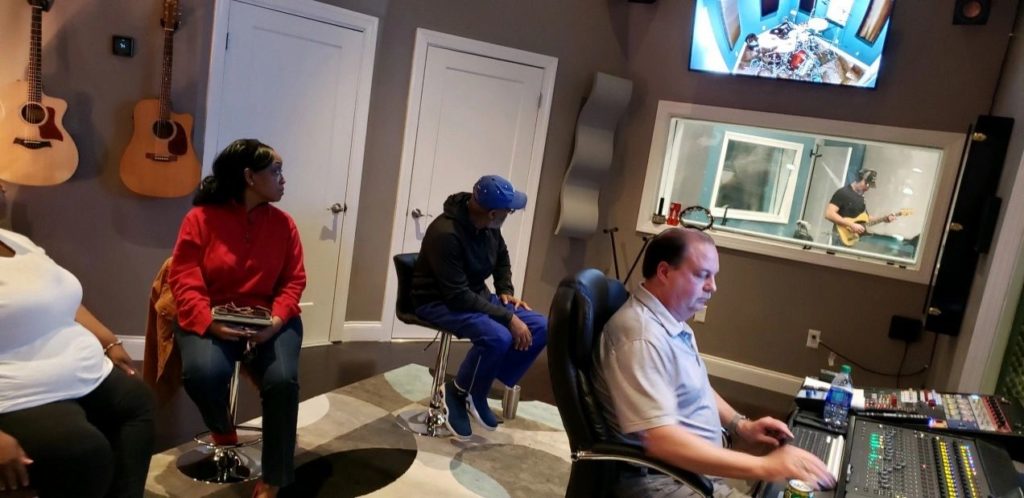
In addition to having best-in-class recording gear and staff, Arch Audio is equipped with the following rooms within their recording facility:
- Tracking Room A – spacious tracking room featuring a Yamaha C7 Concert Grand piano and multiple acoustic, electrical, and bass guitars for client use
- Tracking Room B – large room featuring a Hammond B3 Organ
- Tracking Room C – large live room used for practicing vocals and drums
- ISO Booth – specifically designed for recording vocals and amp isolations
- Control Room – spacious centralized control room which houses the Neve Genesys Black console
- Lounge/Green Room – a private, creative and inviting atmosphere for clients to write and relax
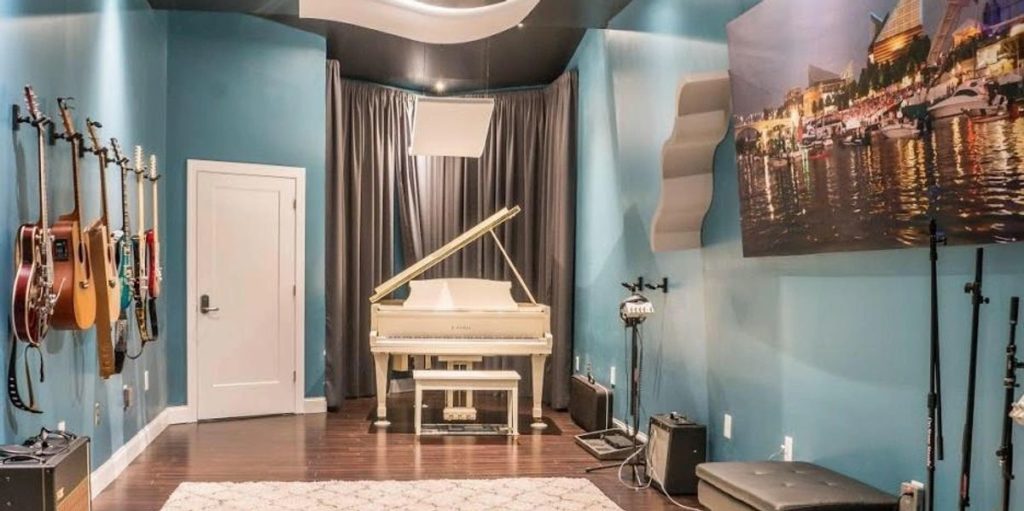
By incorporating world-class equipment and pushing beyond industry standards for commercially viable recordings, Arch Audio has consistently served its customers by providing them with the best sound and experience available in a professional recording studio. It’s no wonder that Arch Audio has quickly become a prominent name in the music industry. In fact, the the Arch Audio “experience” is so compelling, that the studio is being featured in an upcoming documentary.
You can learn more about Arch Audio by visiting their website or social media by clicking on the links below:
Website: www.archaudio.net
Instagram: https://www.instagram.com/archaudiorecords/
Facebook: https://www.facebook.com/archaudiorecords
Top Dawg Entertainment builds new studio complex
Top Dawg Entertainment builds new studio complex with the help of Pro Audio Design Inc & You’re Safe Here designer, Summer Walker
Boston, MA: Pro Audio Design Inc., the pro audio and acoustic treatment specialist, has recently completed an impressive new installation at Top Dawg Entertainment (TDE) in a unique collaboration with interior design specialist Summer Walker of design agency, You’re Safe Here.
Independent record label TDE, was founded in 2004 by CEO Anthony “Top Dawg” Tiffith – legendary executive and producer of Kendrick Lamar, SZA, and many other TDE artists who have collectively amassed a Pulitzer Prize, 16 GRAMMYs, an Oscar nomination and almost 30 platinum plaques, to name but a few.
Based in Carson, California, the original TDE studio, a one-room recording space at the back of Top Dawg’s house, provided a central hub for (at the time) developing artists Kendrick Lamar, Jay Rock, Ab-Soul, ScHoolboy Q and engineer MixedByAli, who spent innumerable hours listening to each other’s work, inspiring new creative ideas, and pushing their limits and abilities.
As the label grew, and success came in the form of hit records and a growing artist roster, the label outgrew the facility and many recording sessions had to be outsourced to various studios around LA, which spurred the decision to build the TDE studio complex.
“When going into this project, our goal was to re-establish the core essence of the original Carson studio by creating a communal space free from the pressures associated with traditional studio rentals,” recalls Keaton Smith, General Manager at TDE. “As we continue to expand the project, our aim is to create more opportunities for artists to come together and flourish.”

The core team working on the project included Pro Audio Design Inc, Summer Walker of You’re Safe Here interior design, Yuriy Sogomonov of TE Builders, Michael Bashkhangy, architectural designer for Malekpour Design Partners, and Luis Valdez of Jocavi Acoustics, overseen by Project Manager, David Anthony of Malekpour Design Partners.
“Being born & raised in Los Angeles, this project hit home for me in many ways,” remarks David Anthony. “TDE has been super inspirational to all Angelenos for over a decade, by keeping West Coast Hip-Hop on the map and giving artists hope that the Music Industry still has room for them.”
He continues, “Top (Anthony Tiffith) and his TDE team have made numerous positive contributions to the community and have always kept their ear to the streets to find the artists that reach the hearts of the listeners.”
Summer Walker, who was the creative lead on the project, also had a personal connection to the project, having previously worked on Top Dawg’s Beverley Hills home.
“TDE has been a staple in my passion for music, providing me some of my greatest moments in time through music and visual content. Being able to feed off that while working on this studio compound has really been a dream.”
For Walker, the project was more than just fulfilling a brief, “For me, as a black woman, to have a team of men who I highly respect give me that respect right back tenfold through this project, shows that the talent is not only there, but worth everyone’s time and mental focus. You know you’re in the right place and time when you feel creatively charged and trust implicitly in your team.”
Dave Malekpour, founder and president at Pro Audio Design Inc, praises the hard work of the design & build team, sharing his thoughts on the finished project.
“The facility has both incredible sounding rooms and is visually captivating and comfortable. The massive Augspurger®® Duo15-Sub218s also provide limitless power when creating beats, and accuracy when mixing. We used Studio Float IsoRafts and were able to achieve very high-level isolation in rooms that are in close proximity. They are capable of producing 127db and keeping that inside a studio presented challenges we were able to overcome. Working closely with Jocavi Acoustics, we also used predictive acoustic modeling and tuned treatments specifically designed to ensure the rooms sound amazing!”
TDE was founded on a belief in community and that collaboration helps bring out the best in everybody. Malekpour wanted to ensure that those core values of TDE were honored within the new design.
“Top Dawg has created a powerful independent label and company that has forged some of the best artists in music today,” he said. “Our team wanted to create studios that would inspire their new and existing artists and producers and capture that feeling in their music.”
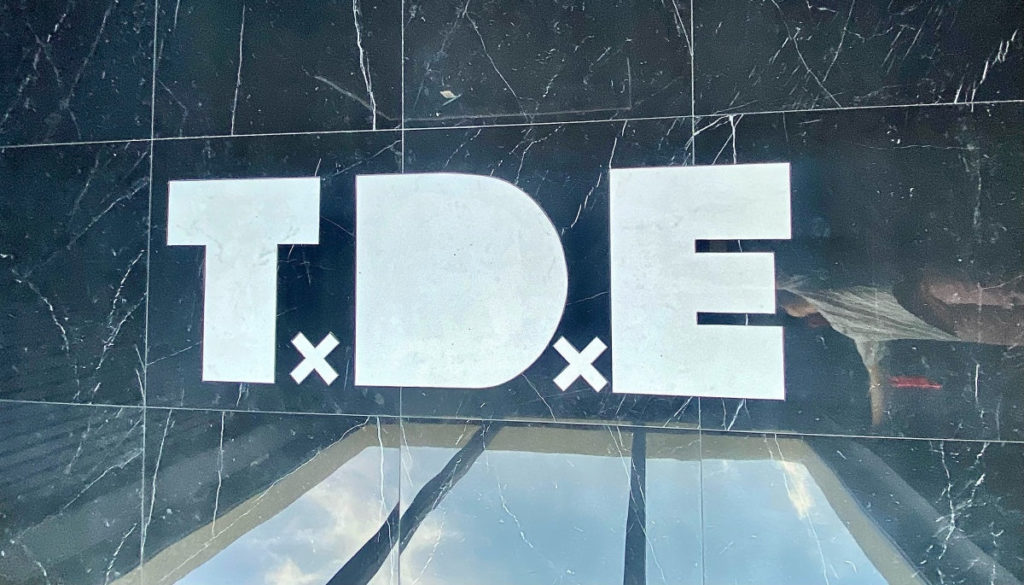
During the NAMM Show, Dave Malekpour will be hosting an AES Academy session on Saturday, June 4th, between 4.15pm – 5.30pm, in Room 202B, providing an in-depth look at the design, construction and completion of Top Dawg Entertainment’s new studios. Panelists include Keaton Smith, General Manager of Top Dawg Entertainment, Summer Walker of You’re Safe Here interior design, Yuriy Sogomonov of TE Builders, Michael Bashkhangy, the architectural designer for Malekpour Design Partners, and Luis Valdez of Jocavi Acoustics.
The session will see the panelists review the project from concept to completion, in what is set to be an insightful and educational discussion.
Carl Cox: “As far as I’m concerned, my studio has the best speaker system in the world”
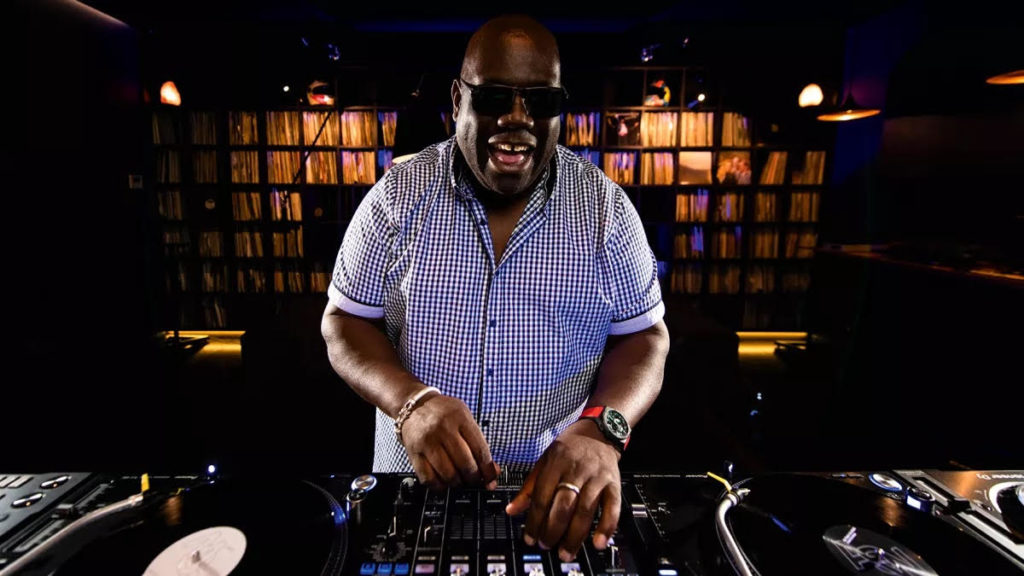
The name Carl Cox needs little introduction to dance music aficionados. A veteran of acid house and techno, he’s become one of the most celebrated DJs on the planet, nurturing the club scene with relentless enthusiasm.
A founding father of the emerging British rave scene, Cox’s F.A.C.T. mix CDs were hugely influential in the mid-’90s, followed by releases on his own Intec and Intec Digital labels, which seeded success for dozens more artists. However, his pioneering career has not been all plain sailing. Disillusioned by the process leading to the release of his 2011 album All Roads Lead To The Dancefloor, Cox swore it would be his last.
That all changed when he acquired a Pioneer DJM-V10 6-channel mixer, which allowed Cox to record and remodel stems culled from his hybrid live performances. Captivated by his improvised jams, his passion for music making was instantly renewed, leading to the swift release of his latest studio album Electronic Generations.
It’s been 11 years since your last album All Roads Lead To The Dancefloor. What were the reasons for such a lengthy recording break?
“When I made that album I was using other people’s studios, but I was never comfortable doing that because the sound, the environment or my head never seemed to be in the right place. I’d write a track and then I’d think to myself, what do I do next, breakbeat, acid, folk? I was fighting to make every single track and an album in its entirety.
“I stand behind everything I’ve done, but when I was sitting in a studio that wasn’t mine with two producers who I love dearly but had different ideas about how the music should come out, it was quite an arduous task because I wasn’t getting hands on with the gear. With All Roads Lead To The Dancefloor, I wore my heart on my sleeve and used a lot of vocalists, percussionist and guitarists from Melbourne.
“My only regret was that it was put out independently, so the time, money, ideas, concepts and marketing fell down to myself and Jon [Rundell] who was running Intec Records for me at the time. We had this clever idea to put the album out on a USB stick too, but it took a year to make and cost me a fortune.”
You took the album out live too. Did that go to plan?
“I said to myself that the only way to really sell the album was to go out live, so I did two live shows in Australia, which were really good, but gathering everybody together was like herding cats [laughs]. Going out as a DJ was a foregone conclusion, but going out as a live artist is another story completely – it was difficult to roll it out and sell it as a live album.
“When I signed to BMG 30 years ago, I went out as a live artist and had a really great time doing those shows, but it took a lot of time to put them together and DJ at the same time. It’s much easier to play live now, especially in terms of all the equipment you have to take out with you, but I got to the end of that album and said to myself, that’s it – I’m not doing any more. In the end, I built a studio just to do club tracks and remixes.”
What brought you back to recording music again?
“During the pandemic I turned the studio into a live streaming room. All the machines that you see here were in separates and I thought, I’ve got plenty of time on my hands so why don’t I just chuck all this stuff together and see what happens. I started experimenting – what if I buy that module or what will it sound like if I plug this into that drum machine? Instantly I was making music with no pressure whatsoever.
“After putting all the machines together, I was asked to do live streams for certain festivals that I couldn’t physically be at. Movement Detroit was the first one but I told them that I didn’t want to DJ; I wanted to play my machines and go live with music that nobody’s ever heard before. They said, sounds like a good idea and you’re Carl Cox, so why not? So I put all the gear together and did a few rehearsals behind closed doors.”
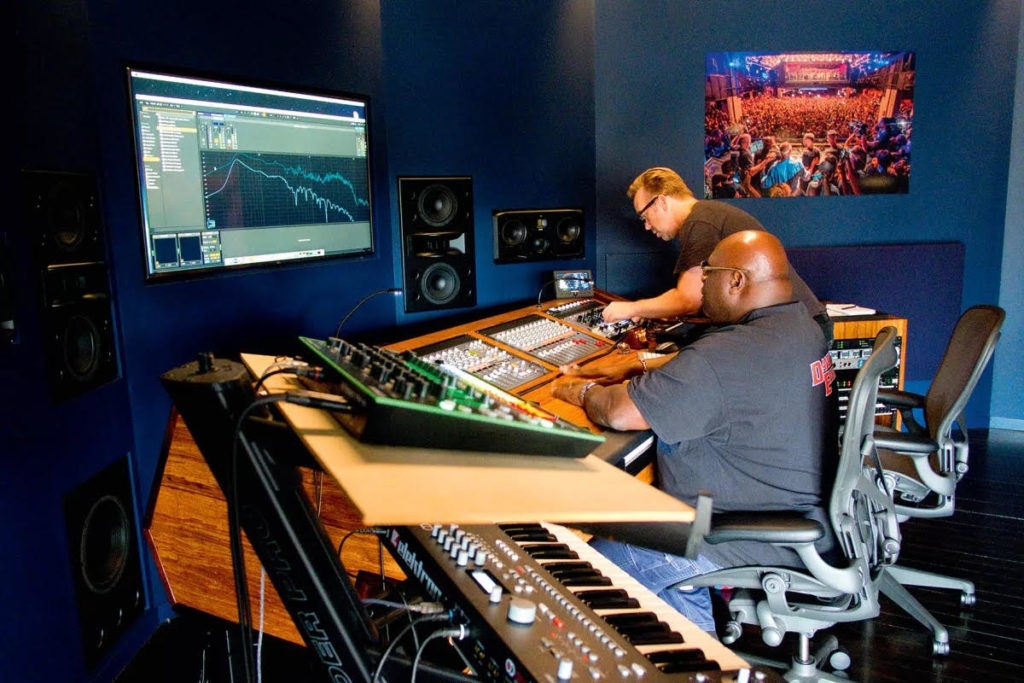
How did that process turn into what we hear on your new album, Electronic Generations?
“One of the reasons why this album came about is because I was using a Pioneer mixer called a DJM-V10. It came out just before the pandemic and after I’d used the beta version I told everyone that this mixer was going to be a game changer. People laughed at me because there are millions of mixers on the planet and I’d obviously got paid to say that, but I’d been working with Richie Hawtin’s Model 1 mixer, which is great, and there are a few things that it can’t do. One of those is recording live stems for each channel via MIDI.
“I thought to myself, if I’m running all of my machines through the V10’s 6-channel mixer and can record everything that I’m doing as stems, that’s a game changer because I’m jamming and rocking the hell out of these machines and adding certain elements to my music that I never would have thought of sitting in front of a computer. Once I’d done a mix, I could go back, remove the top and the tail of it and turn it into a track. That’s something I’d never done before.”
Did you have any technical problems recording the live sets?
“Sometimes the MIDI drops out, which makes things interesting. To be honest, you have to expect the unexpected. If it does fall over, great – it’s live, we’ll be back in a minute – does anyone know any songs? My fall back is that I have a second computer and a DJ setup if need be, so I can still provide a show. But there’s no pressure on the computer’s CPU whatsoever, so unless someone spills a beer on it I can more or less guarantee that we’ll get through a two or three-hour show.”
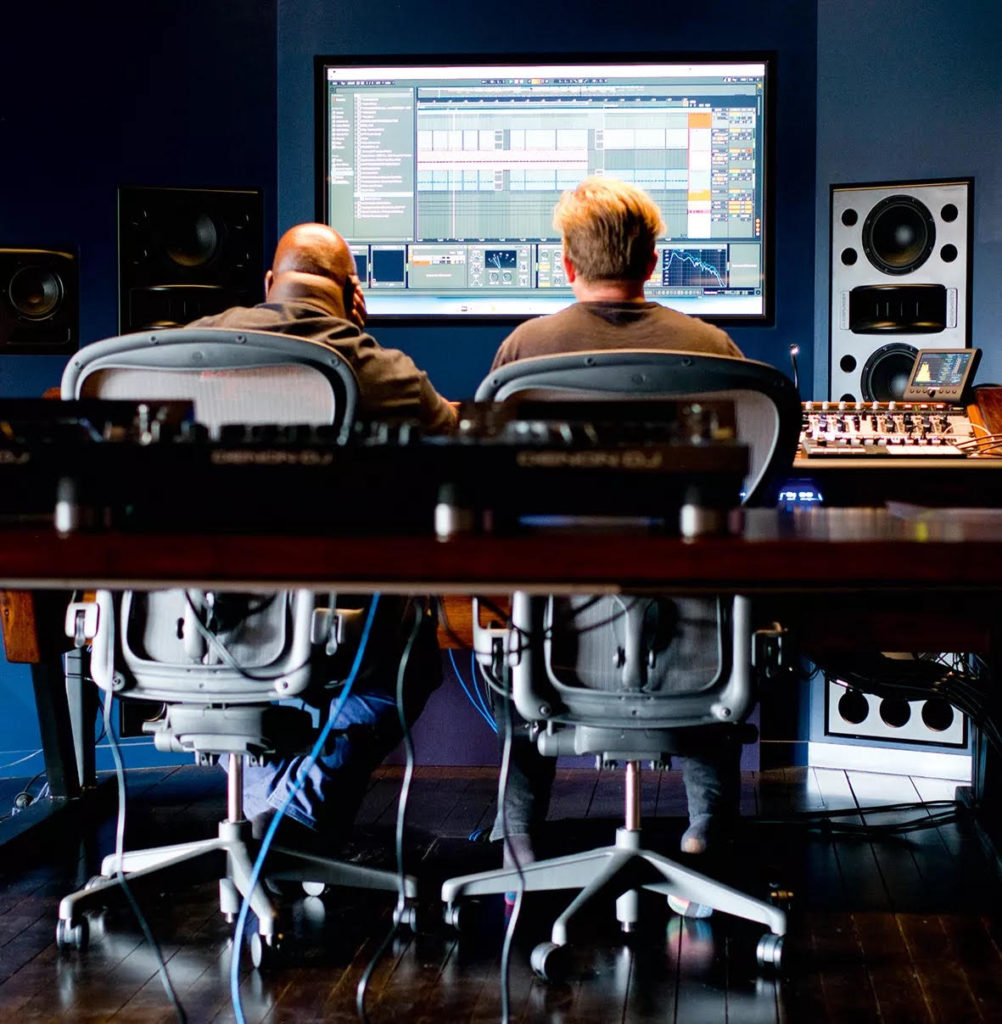
How inspiring was it to stumble on a new way to make tracks?
“Sitting in front of a computer with nothing going on and creating a bassline or a drum pattern is nice, but it’s just nice. When you’re playing live, there’s nothing nice about it – it’s coming out raw and you’re not thinking about anything other than what you’re creating at that particular moment. For me, jamming out my wildest techno fantasies and finding out what I could get out of these machines was really exciting.
“Even if it’s not making sense, you just stem everything out, take out what you don’t need and put in what’s missing. When you start working with these machines, after a while they start working for you. There’s a synergy and then the machines give you what you’re looking for and then some. I’d never have been able to sit there and programme any of it because I wouldn’t get any happy accidents. Thanks to the V10, this is the only way that I was able to come back and make an album, and now the whole studio makes more sense to me.”
Can you tell us about some of the machines used in your live setup?
“Equipment-wise, the Moog Subharmonicon is an amazing machine to have – although trying to control it is another story. I have a love/hate relationship with it. It’s such an amazing, powerful piece of kit that you have to try and capture those moments where its weird sharp keys end up. The sound moves around a lot, so you have to try and catch those oscillations because it’s hard to make sense of that while the pattern is being driven. On the one hand you’re fighting against the Subharmonicon, but it allows you to be more creative than you’ve ever been – it’s like a wild bull, but it’s responsible for a lot of the weird, spacey stuff on the album.
“The Moog DFAM (Drummer from Another Mother) is my go-to shuffle drum machine and is just brilliant, and I used a Korg Monologue on most of the tracks. A friend of mine told me that I needed to get one of them in the studio because it’s got some really good presets, you can write basslines on the fly and it’s small, so I bought the machine and thought, wow, it’s pretty powerful.
“The presets have a lot of really good analogue LFO movement and you can obviously manipulate those and do variances on the LFOs live. A lot of the top lines on the album are from that machine and it sits right at the front of my
live set.”
Is it true that you dusted some old gear down from your garage too?
“I had boxes of stuff that people had sent me – a TR-8 here and a Pioneer DJS-1000 there, so I was just pulling stuff out and hooking it up to see what it did. If I didn’t understand something I’d go online and look at tutorials. Most of the first part of the album comes from the DJS-1000 sampler. All I did was sit down and work on it for a week; then once I had a bunch of tracks I used it as a master controller and daisy-chained everything from there.
“I love hardware because software doesn’t translate live. For me, it’s not a live show until you can move, play and physically hit something – it’s the only way I can show that I‘ve gone from DJing to being a live recording artist that can perform live.”
How did the demo process take shape?
“I did another show for Mystery Man, one for our own label and certain shows for charity and I just found myself making all of this music – about four albums’ worth of mad tracks. Out of those live recordings I just sat down and, within a day, had about 18 tracks to work on. I demoed all the tracks and a couple of friends of mine told me send them to labels, but I didn’t think they’d be interested in someone who’s been around for eons making music out of all these machines because it’s not studio-based-sounding music and it’s not for the dancefloor, festival or clubs, it’s just raw electronic music coming out of these machines based on what I’d created.
“Thankfully, BMG’s Matt King decided to get back to me as soon as he heard it and said that’s exactly what we want to hear Mr Cox and we want you to sign a three album deal. I thought, if someone had told me that 30 years ago I’d be rich [laughs]. It’s unbelievable really because I’d always made music to suit the industry, but this album was the complete opposite; I was jamming my arse off for no other reason than having fun. They asked when I could finish the album off and I said, sometime next week – it’s done.”
Were the tracks really completed that quickly?
“The process of making the music was really quick, but the clever bit was getting the tracks to make sense. When you’re playing live, things come in on the threes, the ones and the twos – and some of the sounds were so improvised that a lot of the music is around the beats but not on it, so there was no real structure. When you work on a computer, everything’s so structured, but this music didn’t comply – sounds just came in when they felt right, but thanks to the process they at least had energy, soul, groove and power.”
The process sounds not so dissimilar to making house and techno tracks back in the day…
“Most of the acid house and techno music I was buying at the beginning was made on that basis. There was no Ableton Live or any of the amazing software we have now – there was no computer powerful enough to run those things. Back then it was like, woo, I’ve got a 4MB computer, this is great! You’d use a plugin and it would fall over.
“Most of what was recorded went onto a two-track tape and was spliced together and some of those records became seminal. Nobody could follow or copy those tracks because of how they were laid down. If you think of a track like Derrick May’s Strings Of Life, it was simple really, but genius at the same time.”
Once you’d sourced enough material for demos, how much more work did you need to do to turn them into fully-formed tracks?
“Not much at all. Each track that I jammed had its own element to it. When I moved away from the last track that I‘d jammed, I’d use a different module, drum machine or sample, so each track had its own flavour, whether that’s electro, hard techno, house, deep house or just electronica.
“The ebb and flow of the music was purely based on where I was going next. One track would be two minutes long and the next might be seven. I didn’t take any elements from one track and add it to another – that wouldn’t work because of the variation in key changes. Within each jam, there were obviously elements that might not have worked as well, but I’d either fix them or leave them as they were.”
Were you surprised at how gritty the record turned out?
“It did kind of surprise me in a way. If you listen to my F.A.C.T. albums, there are a lot of beautifully crafted trance records on there, like Cygnus X’s The Orange Theme, which is one of the most emotional records I’ve ever stood behind. I love that emotion and musicality because it’s not just attached to hard beats and the industrial sound.”
There’s 303 all over the record and that sound’s probably not as prevalent in dance music as it used to be. Do you feel it’s coming back into fashion?
“You’re right, but it’s one of those machines that’s always been associated with hard techno. I put it to the forefront because of my early days of acid house when you couldn’t play an acid record without it. We probably moved away from it because modern DJs never went to raves and haven’t heard the sound. Now when they hear it, they’re buzzing and sales of TB-303s are going through the roof.
“It doesn’t have to be a predominant sound, but it’s great as an embodiment of a low-end sound that can be put in-between basslines and percussion. For me, it harks back to the old-school days; it’s what got you off your feet. I’ve got the obligatory TR-8 drum machine, a TB-3 and it’s all running through MIDI, which is lovely. There’s no delay at all, it’s all running smack on time.”
How do you manipulate the 303?
“I manipulate the sound by putting patterns through a Moogerfooger then moving the frequencies around to make the 303 sound even bigger. By bolstering the sound and giving it a punk edge, I like to think that I’ve created a go-to Carl Cox 303 sound on two or three tracks on the album.”
You’ve also switched to Ableton as your main DAW…
“I only use Ableton Live. I’ve used Logic in the past, but found that I became quite rigid using that and the amount of parameters you have to go through becomes overbearing. Some people are geniuses on Logic, but I don’t have time for all that. Ableton wasn’t that great at the beginning from a sound processing point of view, so I’d just import all the files into Pro Tools, but I found that Pro Tools was going a bit too corporate so I switched back to Ableton and just got better and better at using it.”
Obviously, the process behind the making of this album was unintentional. Does knowing that your live shows are going to be committed to a recording suddenly introduce an element of pressure?
“I’ve got to think punk about all of this. They went in with an ‘I don’t give a shit, fuck you, bollocks’ kind of attitude. None of it was in key, they didn’t give a shit and didn’t even want to do it, but people loved it and they sold a million albums. How does that work [laughs]?
“For many years my music’s been accommodated: ‘Oh, that’s nice Carl, it’s a lovely track – I’m sure it’ll do well for you’, but with this album I really didn’t care. The rave scene was built on that energy – the whole jungle movement and breakbeat, The Prodigy’s Smack My Bitch Up wasn’t radio but boom, bang, and it’s a No 1 global tune. We need some of that to come back and it’s based on people’s attitude to making music.
“My music’s never really sat well with others. Even in the rave days I took it up to gabba, which is 180bpm. It wasn’t that I was angry or anything, but it was going somewhere until it wasn’t anymore. But my attitude was always punk – if I’m playing house, it’s the edge of house music, and the same with techno.”
There is a second version of the album on the way…
“The original album is literally Carl Cox’s Electronic Generations with 17 tracks and no guests, but I’m going to let them put out a reimagined version of those original tracks that allows certain artists to do something conceptual with the music. Fatboy Slim was the first and there are other tracks featuring Franky Wah, Nicole Moudaber, Juan Atkins, and Wilkinson. We’re nearly there with that, but it won’t come out until the original album’s been released.”
You have two studios, in Brighton and Australia?
“I built a fully-fledged professional recording studio in my old house in Horsham, which allowed me to do everything including mastering, but I never used it as much as I would have liked and felt uncomfortable recording at other people’s studios because it’s too stressful working against the clock. Eventually, I built a professional studio in Melbourne and when I walk in there now it feels like the best recording studio on the planet. Christopher Coe’s my right-hand man, an artist in his own right and a partner in my ASW label too.”
What speaker system are you using?
“As far as I’m concerned, my studio has the best speaker system in the world. I’m using Augspurgers® speakers, which have incredible power and energy, and ADAM Audio S3X-H monitors that give a rich, low-end feel to the sound. What you can’t see is the Funktion-One sound system.
“We have these fucking great big mid-height TM monitors and on the floor is a big 24” sub bass cabinet. I’ll take my remote monitoring system, go to the back of the room and switch between the ADAMs and the Augspurgers®, but when I want real world I’ll go to the Funktion-Ones, which sound unbelievable. It’s overkill, but if we hear any problems, I’ll rebalance the mix and boom - we’ve got it in the pocket!”
You sound totally enthused now…
“I’ve found myself in a very productive and creative place. For me, it’s necessary to go out there and show the people why I do what I do and if I didn’t love it we wouldn’t be having this conversation. This is my answer to entertaining the troops and the people who love electronic dance music. I’m excited to get back out there to my happy place – here’s a kick drum, we’re going to go somewhere from here and there’s no holding back!
“My DJ career is one great story but I think people know who I am as a DJ now and what I can do to any dancefloor. The live shows are unknown territory for me, but they’re also the tip of the iceberg because there’s a lot more to come. I could rest on my laurels as a DJ, but I still want to work for it and for people to understand that there’s no point companies making these machines and nobody using them. We’ve got plenty of DJs now; what we don’t have is a lot of electronic live artists that want to go out and perform, so hopefully I can be part of that new movement.”
Carl Cox's choice gear...
CCX Bus Compressor
“Made by the genius Arjan Hebly, it’s the hardest working piece of kit I own.”
Manley Massive Passive EQ
“A classic unit with such characterful EQ and power. It was this or two Pultecs...”
Zähl EQ 1
“Used on everything. For a master buss chain it gives us more air and better bass extension and clarity across the mix.”
Moog Mother-32
“Ah, the joy of this synth. Moog was so kind to give me this as a gift.”
Roland TR-8
“I use it all the time for my live shows.”
Make Noise Shared System
“I’ve had many sleepless nights trying to figure out the magic behind these amazing, weird boxes.”
SOMA Pulsar-23
“Joseph Capriati gave it to me for my birthday. I’ve never seen or heard a drum machine like it.”
Erica Synths LXR-02
“Proper techno comes out of this box as soon as you switch it on.”
Pioneer V10 Mixer
“My go-to mixer now; I can record the stems of my live show straight into Ableton.”
DOCtron IMC
“Master chain unit that I use on the final output of my live kit. An EQ, compressor and saturation box. It lifts everything.”
Nobody Beats The Wiz
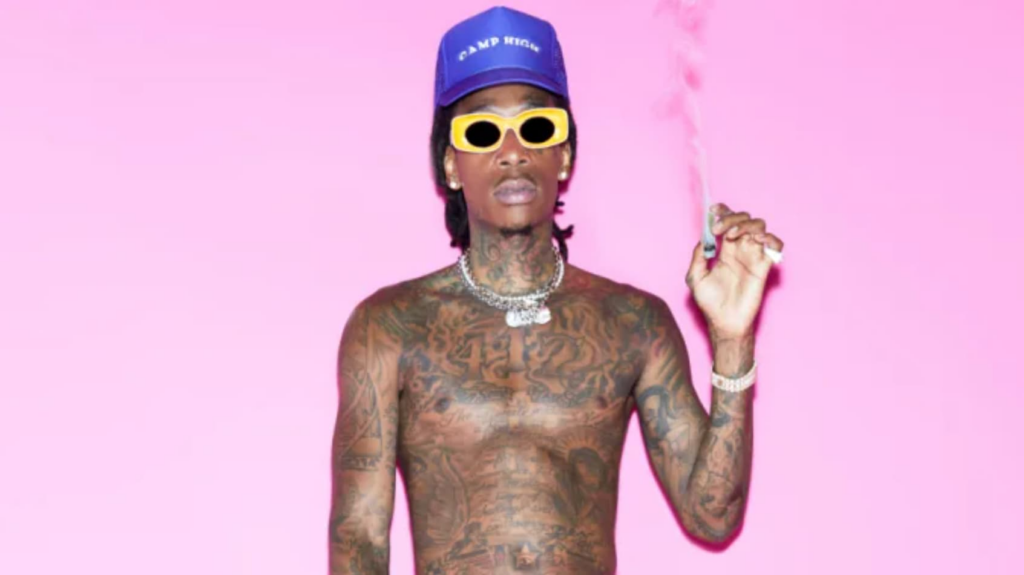
Wiz Khalifa is riding on a high right now, but not the kind that those who’ve followed his journey as an artist may think. While a number of his blog era contemporaries-turned-bonafide-superstars have opted to temper the number of projects they release at this juncture in their careers, Wiz has leaned in, giving the people what they want through a succession of musical releases, albeit collaboratively.
Nearly four years removed from the release of his last solo album, Rolling Papers 2, the Pittsburg native and Cali resident has spent the past few calendars dropping musical projects with his band of friends within the business. After teaming up with Curren$y for their long-awaited reunion project, 2009, and locking in with frequent collaborators Sledgren and Cardo on Wiz Got Wings, Khalifa kicked off 2022 with a pair of joint projects: Stoner’s Night with Juicy J and Full Court Press. The latter finds him joining forces with Smoke DZA, Big K.R.I.T., and producer Girl Talk. He’s also made it a top priority to thrust his Taylor Gang roster to the forefront with various compilations and mixtapes showcasing their talents, proof he’s still all about spreading the love and finding strength in numbers.
For a guy churning out music at such a rapid clip, it’d be safe to assume that Wiz Khalifa lives in the studio—which is exactly the case. He’s become a studio rat in large part by having one in close proximity to his living quarters. Spending his early years recording and developing his sound in studios like Pittsburgh’s ID Labs, the rap veteran decided to build one of his own, creating a recording space at his home in Encino, CA. With the help of Augspurger®, which specializes in studio monitors and speakers, Wiz now has one of the most powerful sound systems at his disposal, which is also used by the likes of Dr. Dre, Coldplay, Alicia Keys, Snoop Dogg, and more.
And with his forthcoming album, Multiverse, the long-awaited follow-up to Rolling Papers 2, slated to drop this summer, and another album with Curren$y in the works, he’s certainly going to need extra reinforcement for the booming sonics he and his musical coconspirators are creating.
VIBE spoke with Wiz Khalifa about taking his recording process in-house with Augspurger®, finding joy in collaboration, creating Multiverse, and the rap icon he wants to trade verses with for an entire album before it’s all said and done.
VIBE: After spending a large portion of your career recording in other peoples’ studios, you’ve recently begun creating the majority of your albums from the comfort of your home. What spurred that decision and when did that transition begin?
Wiz Khalifa: I wanted to have the option to go in and record at any moment of inspiration. I started building my home studio last year.
How has recording in your own studio impacted your artistry or approach to creating music?
I’m the most comfortable at home, so my brain and creativity can really open up in an organic way. Also, the homies get to come in and collaborate while we’re all hanging out, and some of the best nights at the crib have turned into great songs.
You spent your early years recording music at ID Labs back in Pittsburgh. What are some of the lessons and tools of the trade you learned there that you’re using today?
I learned almost everything about recording at ID Labs with E. Dan. He has been with me from the beginning. And setting the vibe in the room is super important. Being respectful but having fun is the environment at ID Labs and what I create.
Aside from yourself, who are some of the artists you’ve had grace your vocal booth thus far?
We always gotta have the Taylor Gang guys in the booth like Fedd the God, Juicy J, Chevy Woods, and Young Deji, to name a few. We’ve also had Tyla Yaweh come through, and we’re excited to get more of the homies to pull up on the new music I’m working on.
Do you handle any of the engineering during sessions that take place at the studio? If so, what’s it like being on the opposite side of the board for a change?
Shout out to my engineers Aaron Dahl and E. Dan of ID Labs. I post up right next to them and we work together on all my songs. I’m super involved in the process and have learned a lot about it over the years.
You recently worked with Augspurger® to install a huge speaker system at the studio. Their equipment has also been used by the likes of Dr. Dre, Snoop Dogg, and Alicia Keys, just to name a few. How did that relationship develop?
The Augspurger® guys have been the homies for a few years—I met them through E. Dan of ID Labs. They always make sure I’ve got the best setup.
How has Augspurger® helped enhance the overall quality of your studio?
The quality of my home studio has been majorly enhanced by Augspurger® overall. The sound and placement of the speakers is on point, and it’s the most important feature of the studio.
You kicked off this year by releasing Stoner’s Night, your collaborative album with Juicy J. Being that you’ve worked together for more than a decade, how has the creative chemistry between the two of you evolved?
Juicy J and I have a really close friendship and amazing chemistry when recording. He knows exactly what he wants and how he wants a song to sound and I’m always right in there helping bring the vision to life. We respect and trust each other to do what we do best and we always have a good time.
You also teamed up with Smoke DZA, Big K.R.I.T., and Girl Talk for the Full Court Press album, which dropped earlier this year as well. Who spearheaded that project and how did all of the moving parts come together?
Girl Talk got us all together a while back and we were mostly just partying, smoking, kicking it, having fun, and each of us would go in and do our thing and it turned into a really great body of work. We finally got everything together to release it and we’re excited to share it with the world.
Being that you, DZA, and K.R.I.T. all made your bones during the same era, what was it like working with those guys as a unit, given the history y’all have with one another?
They’re all amazing people. We all came up in different ways but around the same time so it was fun to exchange stories and things we have learned in our careers. We all get along really well and have great chemistry when it comes to making music.
One artist fans are always eager to hear you alongside is Curren$y, with whom you released the album 2009 a few years back. What are the prospects of the two of you linking back up again for another project?
Curren$y and I are definitely linking up soon to put another project out for the fans. I love that dude and I’m excited to get back into the studio with him. I’ll go out to him in New Orleans and have him pull up to my spot in LA.
Being that you’re open to working in tandems and groups, if there was one collaborative project you could have on your resume with an artist you’ve yet to work with, who would it be?
I would really like to work with Jay-Z.
Your forthcoming solo album, Multiverse, is slated to drop later this year. What inspired that title and what can the fans expect?
The title comes from the unique world that I live in and experience. It’s one of my favorite projects to date and I’m so excited for the fans to come into my world and go crazy with it.
Is there a timetable for its release?
We’re dropping it in the summer and you will definitely see me perform the album on my summer tour.
Who are some of the artists and producers you’ve worked with for this project?
We’ve got Ty Dolla $ign on there and a few more homies are going to be pulling up on it. Some of the producers are Hitmaka, Sledgren, ID Labs, RMB Justize, Big Jerm, IamSu!, and more.
What’s next for Wiz Khalifa, creatively, in business, or otherwise?
I’m super excited to release my next album Multiverse and go on the Vinyl Verse Summer Tour with Logic, 24KGoldn, DJ Drama, Fedd the God, and C Dot Castro. I’ve got my Khalifa Kush business expanding in several states across the country, my gin brand McQueen and the Violet Fog going crazy in sales, and I’m creative directing for the PFL. We’ve got a new season with my voiceover character on the animated series Duncanville, and a couple more TV and movie appearances on the way.
Source: Vibe Magazine
Dave Malekpour interview: “Working with top artists is inspiring!” PAD founder on the creative process
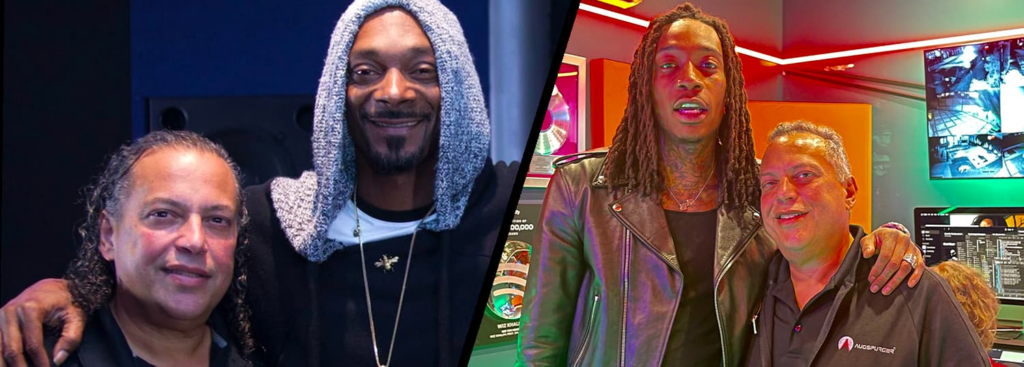
Dave Malekpour hasn’t just helped define the sound of hip hop, he’s had a profound impact on the design of modern recording studios. His approach to workflow and loudspeaker technology has been a seminal influence on recording engineers and producers alike, and his speaker brand Augspurger® counts Snoop Dogg, Dr Dre, Coldplay and Alicia Keys amongst its users.
Based out of Massachusetts, Malekpour runs both Pro Audio Design (PAD), purveyors of studio equipment and design support, and loudspeaker specialist Augspurger® Monitors. Calling on his experience as a musician and engineer, his ability to fine tune his systems is legendary, and so is his work ethic. He starts the day with an hour of Crossfit. “Then it seems work is easier and it benefits my health and stress!” he tell us.
Malekpour founded Pro Audio Design in 1993, with the aim of fully integrating studio design and equipment retail. In 2000, he launched Augspurger® Monitors, after demand surged for his own custom made enclosures.
More recently he’s added Studio Float to his portfolio. Studio Float sells Iso Raft, a dedicated construction isolator for use in recording studios, music venues, theatres and nightclubs. Iso Raft blocks utilises a novel sandwich construction joined by a silicon de-coupler, and prevent noise escape.
Audio Media International caught up with Dave Malekpour in Los Angeles, as he completed a few days reviewing a site for a project PAD are designing for Top Dawg Entertainment’s new HQ.
“I’ve also been looking at a new Dolby Atmos mixing suite for a client in a nice Downtown location, and tuned a couple of studios,” he confides, “Studio City Sound’s Augspurger® Duo15-Sub18s in their classic SSL 4K room, and (film and TV) composer Tony Anderson’s private studio which is quite a nice spot in an outbuilding behind his residence…”
Malekpour clearly likes to make a difference: “I think one of the things that brings me satisfaction is helping our clients achieve their goals, and being part of their successes using the rooms we create and speakers we build.”
Making a deeper connection
Dave Malekpour says motivation comes from being able to create a product that inspires artists, while giving producers and engineers the information they need to make sure their work sounds as good out of the studio as it does in the room.

Dave Malekpour: “When we got to build Jay-Z’s first home base in NYC Baseline studios, that gave him and his team a place that they could really create and push the envelope. When Young Guru first heard the Augspurger®’s we put in, he said it changed everything for him as an engineer, but also for the artists and producers working there.
“The early days of hip hop were a formative time and bringing in huge power amps and 18-inch subs wasn’t the norm. Today we have full range systems in every installation.”
“I think when you can hear the music like a performance in a sound stage around you in your own studio, this allows a deeper connection to the creative process. Today we can record down below 20 hertz with today’s DAW if your converters are up to it.
“We need to hear the entire range of low end to get the balance right, to get the vibe right, to get the top end and mid-range to highlight to vocals, and we aim to make that limitless, where you can create any sound and the systems and rooms do not prevent you from reaching new heights in music.”
“Teddy Riley, Rodney Jerkins, The Weekend, Coldplay, and mix engineers like Jaycen Joshua, Jean Marie Horvat, Rich Keller, Dave Pensado, Rafa Sardina, Jose ‘Hyde’ Cotto, Bob Horn, and many others all use their systems in different ways, make different music and craft their sound on our systems.
The business of inspiration
While PAD and Augspurger® Monitors are in the business of inspiring artists and recording engineers, Malekpour himself was famously inspired when he first heard Dynaudio Acoustics M1 monitors on a visit to Abbey Road back in the 1990s. Have any brands, or equipment, made him catch his breath since?
“Well, that was a magic moment for many reasons, just being in Abbey Road at that time was something special,” he recalls. “Geoff Emerick gave me a tour and we went to the mic locker, and had lunch with the engineers in the cafeteria. Wow! But yes, hearing the Dynaudio M1 that Andy Munro created was really eye opening at the time when there weren’t too many high-end nearfield or mains at the time.”
There are only so many Eureka moments in this business, says Malekpour. “But there are some standout moments. Listening to the Augspurger® Duo8’s with Sub12’s we designed and created in a shootout Vintage King arranged in Malibu at Woodshed studios against all the top brands in our business was one of them. We wowed a room full of top engineers and were chosen by Woodshed on the spot. I knew we had created something special.
“We had been working on it for about 2 years and the goal was to create a smaller speaker with a new horn that would couple with an 8-inch driver and get the speaker closer to the listener and to fit smaller rooms. But we had never had the chance to AB against the other top brands. When we got that chance the night before the shootout when setting up, it was a clear winner, and that was without the sub woofers which when added really changed the game for us.”

Working for top artists is inspiring, he adds. “We have to push ourselves to make the best products, design the best rooms and that technology is making things easier, more fun and incredible sounding.
“For Snoop’s studio, he wanted to have his equivalent of the Starship Enterprise, complete with wraparound console system and his command throne in the centre!”
“Each one is unique and individual, though one thing is common to all, and I think it’s connecting with their music. When you feel the music, you can put that into your performance, writing and create a connection for the listener to experience. I think our speakers do that in a way that’s really emotive yet very accurate, and detailed, so you are getting the truth and can really feel when it’s right.”
Technology Vs Art
Technology can sometimes stifle creativity, concedes Malekpour, either by offering too many choices or inviting creatives to chase a sound instead of a great song or vocal performance.
The ultimate artist experience is when technology is not part of the creative process, he insists. “You aren’t thinking about if the speaker or room or if the microphone is doing something, you just create and feel you have no bounds. We aim to provide a feeling of being unlimited except by your own creativity, not the room, system or technology. At least that’s my ideal vision of what we are trying to create with our work.”
“Really, what makes a great recording starts with a great song, which, let’s be honest, can be captured on an iPhone without the complications of a studio,” says Malekpour. “What we aim to do is seamlessly integrate the required technology for today’s high-end recording processes, while allowing the artist to focus on the music and the creative process.”
